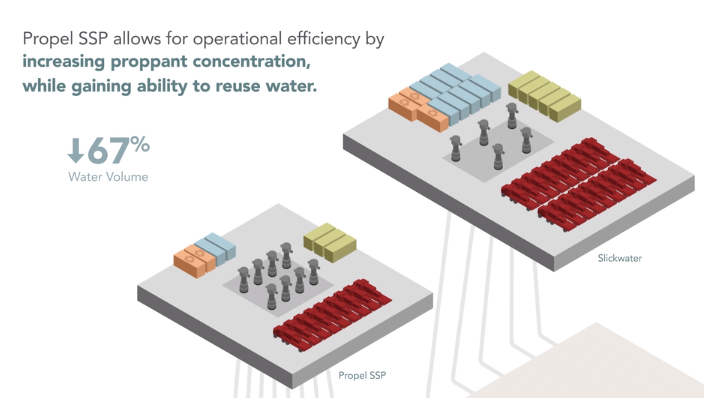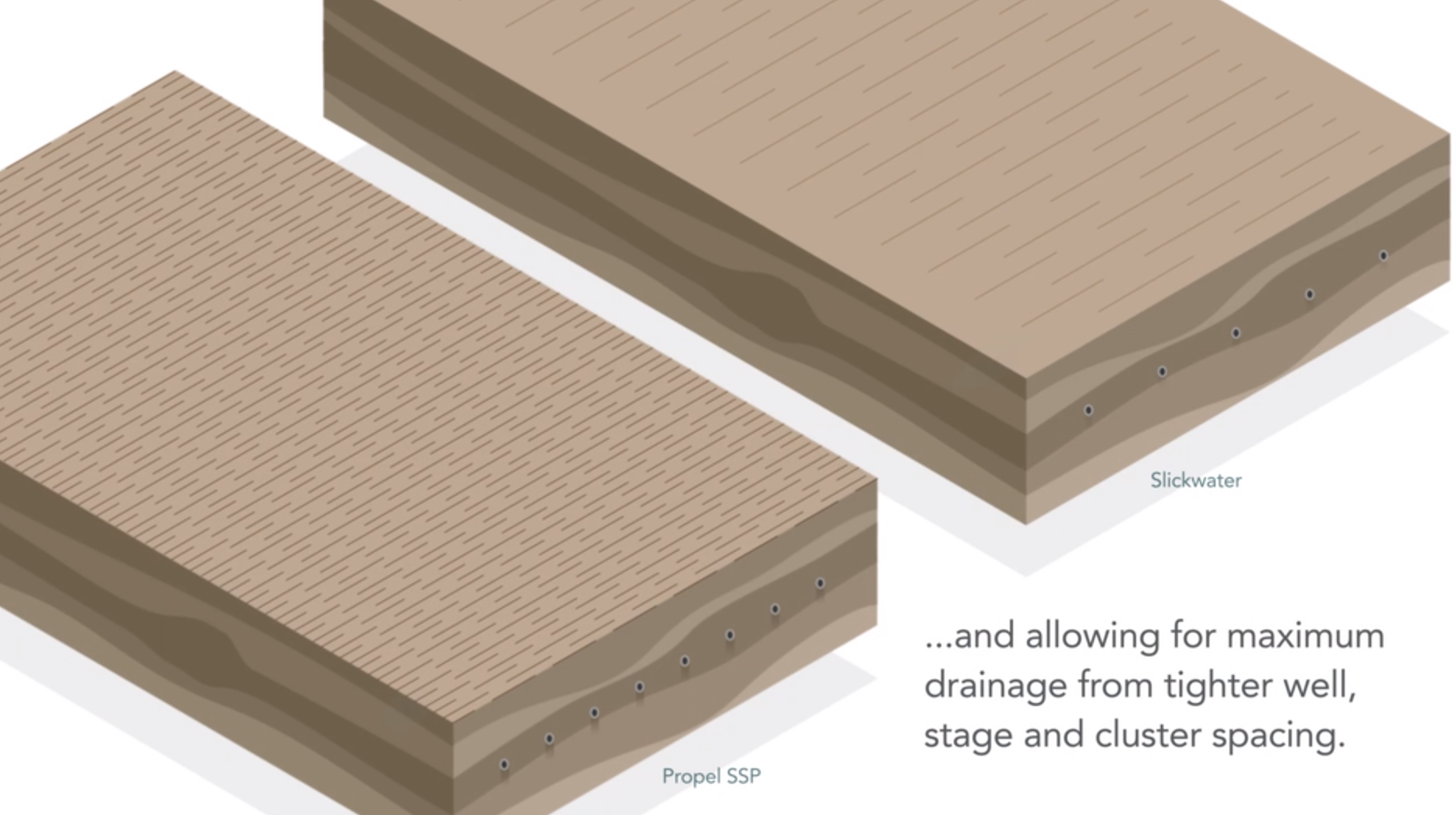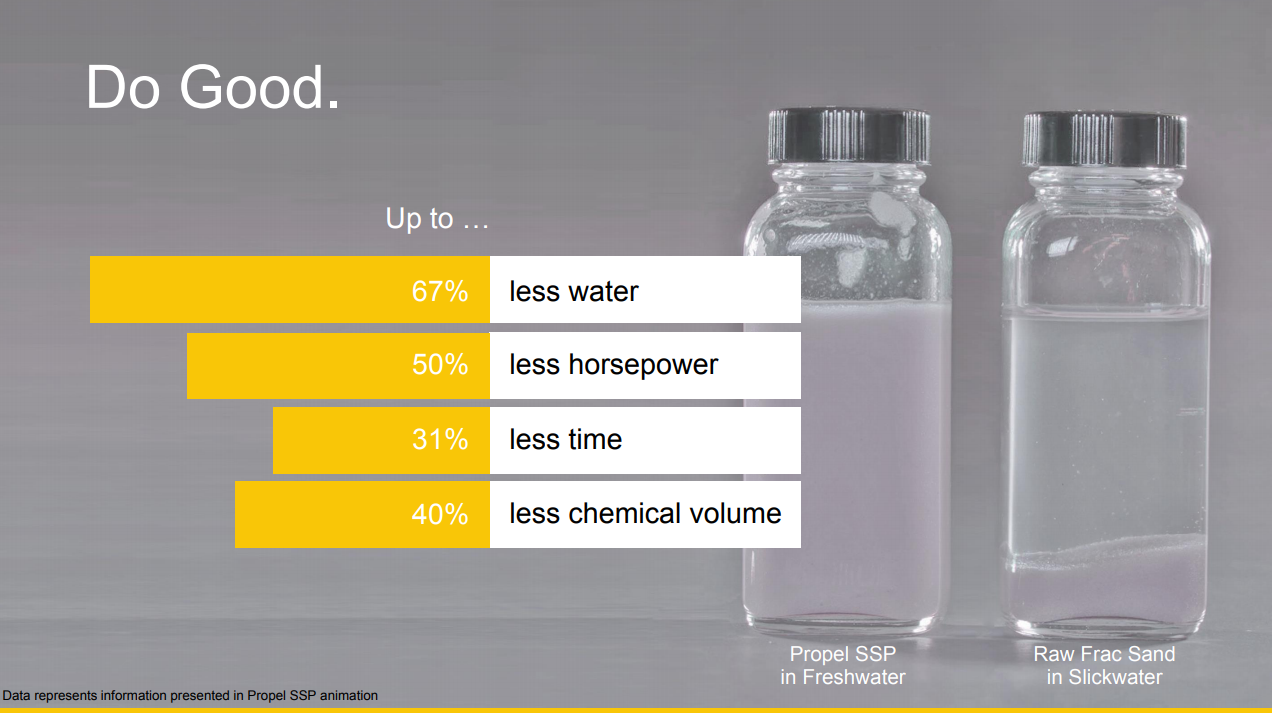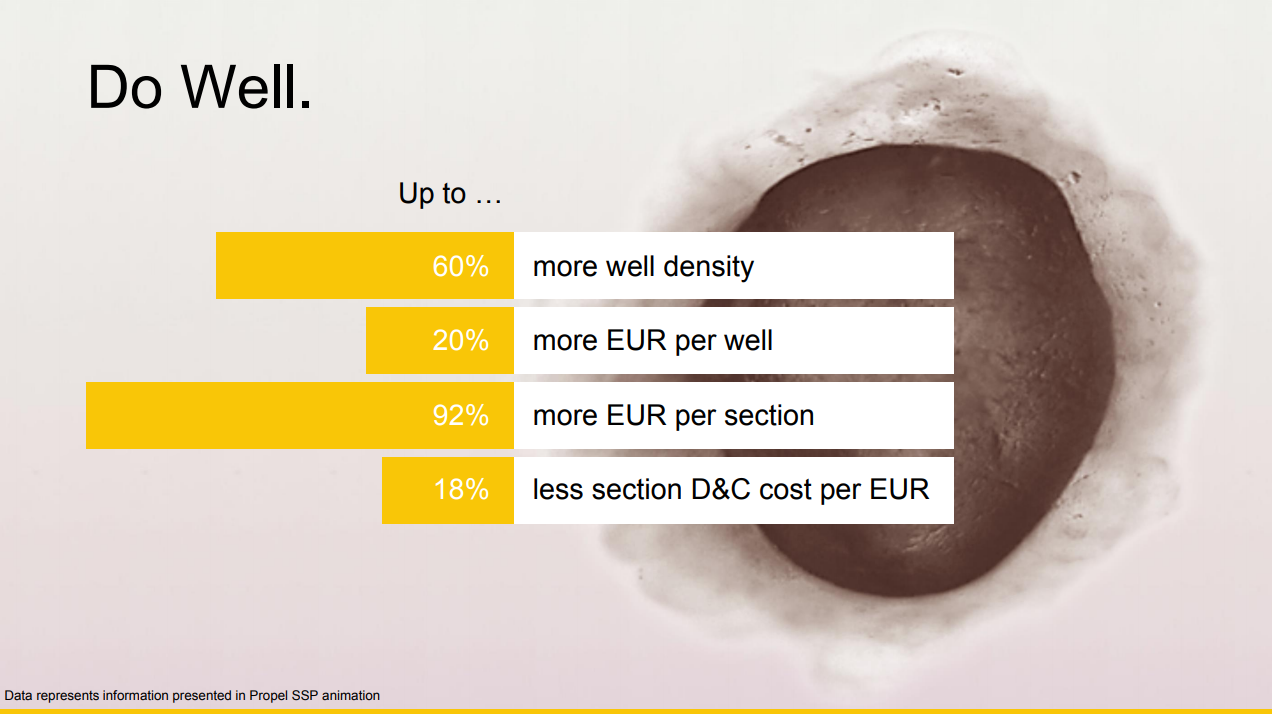Improvements in how sand moves affect EURs
The Oilfield Tech and Innovation Conference in Dallas was host to many companies who are challenging the status quo in various sectors of oil and gas. Completions designs were no exception.
At the conference Fairmount Santrol (ticker: FMSA) product director Brian Goldstein discussed how Fairmount is rethinking the proppant process, with new technology that will more than likely change the way wells need to be completed.
Current completions technology makes completing a well a very intense process. Horizontal wells need large amounts of materials to go down the hole and a lot of expensive high-powered equipment to force everything down to the end and out into all the fractures.
The average new well needs about 14 million gallons of water, according to Goldstein. Numbers for sand consumption are equally intense. Most wells need some 12 million pounds of sand—that means bringing to a wellbore 250 truckloads or 50 railcars’ worth of sand. Forcing all this water and sand into fractures miles down the well requires powerful, resilient equipment. Frac fleets at a new well site now average 45,000 horsepower.
Goldstein and his company Fairmount Santrol are asking, “Does it have to be that way? Does it really have to be lots of energy, lots of power just pushing everything down hole?”
Traditional completions designs: high friction, low proppant transport – now the industry can reverse that
“To some degree, yes,” Goldstein said at the Dallas conference.
“Everything at the end of the day comes down to the rock. I don’t care what technology you apply against it, you have to be able to be able to break the rock.”
Goldstein pointed out that much of a frac fleet’s energy is spent fighting friction, not cracking rock open and propping it open.
In addition, current frac designs have difficulty transporting proppant.
A typical slickwater frac mostly relies on water speed to transport sand, Goldstein pointed out. And when the flow slows down, the sand falls to the bottom. Even during high-rate completions, the sand in the lateral portion of the well typically moves in dunes just like nature moves sand at the seashore.
This creates a problem for fractures, because the sand in a slickwater job usually does not prop the portion of the fracture that’s above the horizontal wellbore. Why—because that would require the proppant to rise against gravity.
Expanding resin coated proppant can mitigate these problems
Fairmount believes it has a solution to both of these problems with its Propel SSP proppant treatment.
Propel involves coating sand or ceramic proppant with a resin. When exposed to water, this resin swells significantly, expanding the grain size by 300%. This sand is then pumped into a well using standard procedures, and after the job is complete the operator pumps down a chemical that dissolves the resin coating.
To apply the proppant to a well requires pumping it down the well with water under pressure. Water filled with this treated proppant shows a lower viscosity than water filled with regular sand, which means the friction to pump the sand horizontally through the wellbore is reduced.
In addition, the treated proppant is much better at moving down the well and propping above the wellbore, meaning the whole fracture can be propped. Proppant is not likely to travel as far into the formation, but this is not necessarily a problem.
Subtle changes ripple through designs
While lower viscosity and better transport may seem like somewhat inconsequential changes, they have large overall effects on the well and the process of development.
Lower viscosity means a frac job needs significantly smaller frac spreads, with much lower horsepower requirements. Companies need fewer chemicals. Additives like friction reducers are not needed. Jobs also do not need as much water, because by using the Propel treated proppant, transporting it does not require highly accelerated flow rates.
The shorter distance Propel travels into the formation might seem like a disadvantage, but in fact it is in line with the general trend of completions design today.
More contained fractures mean wells can have tighter fracture spacing and wells can be drilled closer together. This means the improvements from using Propel compound. While single-well EUR can increase by 20% from using Propel SSP, the EUR of a section can nearly double.
Doing good and doing well
According to Goldstein, Propel SSP overall fits nicely with Fairmount Santrol’s motto, “Do good and do well.”
Reduced water, chemical and horsepower requirements mean the environmental impact of a well is significantly reduced at the same time as the improved EUR per well and per section make the treatment highly economic.
Propel competitive advantages follow changes in frac designs
Propel is still in the early stages of adoption, so Goldstein explored the process of completions design changes in the industry.
“Most things in industry shift because of cost,” Goldstein said. “People said, ‘Oh, maybe we can use that fine mesh, the stuff that is dumped, and maybe we can start putting that down hole.’ It worked. It wasn’t messing up the wells, and so people started doing it more.“
“So then you say, ‘Well, okay. Well, what else can we do?’ And then you start looking at slickwater. They’re looking at fine mesh and slickwater together so that’s further cost reduction. That was also stimulated from high cost of water back in the 2012, 2013 timeframe.”
“So there’s reasons from an economic standpoint that things shift,” Goldstein said.
“But if you have a technology that’s able to basically move any grain size of sand, you can play against market dynamics. You can play against those headwinds of availability of trucks, availability of crews, availability of sand, and have that flexibility, the different arrows in your quiver, to be able to complete your wells.”
“So this is all about building competitive advantage. The operator here isn’t just looking at, ‘Oh, how do I make more production’, which they can if they want to play that game. But it’s about exploring different ways to play differently in the field.”
The full presentation by Brian Goldstein may be seen here.








